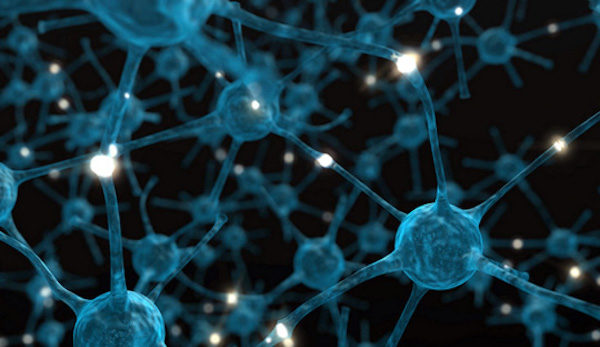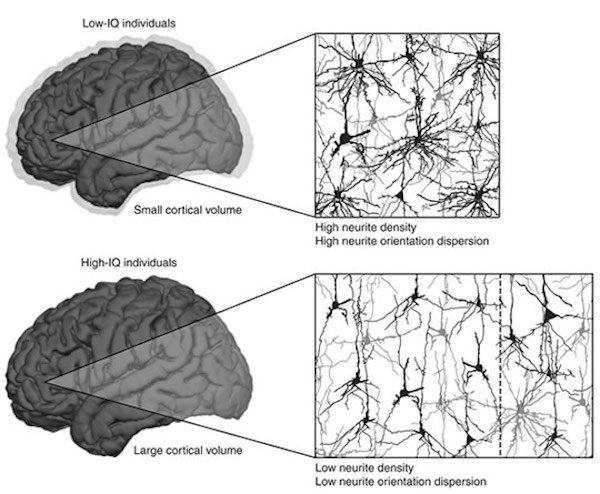People with bigger heads are, on average, more intelligent, new research confirms.
Bigger heads contain bigger brains, which have more neurons (brain cells), which make people smarter.
But wait, that is not the end of the story.
The latest neuroscience research suggests there's a twist.
When you 'listen' electrically to the brain running, the more intelligent ones make less 'noise'.
It's like a larger, more powerful engine somehow running quieter.
It turns out that on top of having larger brains, more intelligent people have fewer connections between neurons in the cerebral cortex, research finds.
The reason is that the brains of intelligent people are more efficient - this is known to psychologists as the 'neural efficiency hypothesis of intelligence'.
The conclusion comes from a neuroimaging study that looked at the brain's microstructure.
Analysis of the brains of 259 people measured the number of dendrites in their brains.
Dendrites are extensions of brain cells that reach out towards other brain cells, enabling them to communicate with each other.
IQ tests showed that people with fewer dendrites were more intelligent.
It is more than just size that matters, it is how efficiently your brain cells communicate.
With fewer dendritic connections there is less 'noise' in the brain and the signal is purer.
Fewer dendrites also consume less energy - hence, a more efficient brain.
Here is the author's schematic depiction (from Genç et al., 2018):
Dr Erhan Genç, who led the study, said:
"The assumption has been that larger brains contain more neurons and, consequently, possess more computational power.The study was published in the journal Nature Communications (Genç et al., 2018).
However, other studies had shown that - despite their comparatively high number of neurons - the brains of intelligent people demonstrated less neuronal activity during an IQ test than the brains of less intelligent individuals.
Intelligent brains possess lean, yet efficient neuronal connections.
Thus, they boast high mental performance at low neuronal activity."





Reader Comments
What is true intelligence vs a purpose made machine? It's like comparing ai to a program that has a specific purpose. The program is faster as it's preprogrammed but the ai can learn things beyond its initial input.
So yes, I get what you mean; that sometimes intelligence is preprogrammed. But the constants are objective reality and a bad example. Unless you have objective evidence that some have changed that constant...